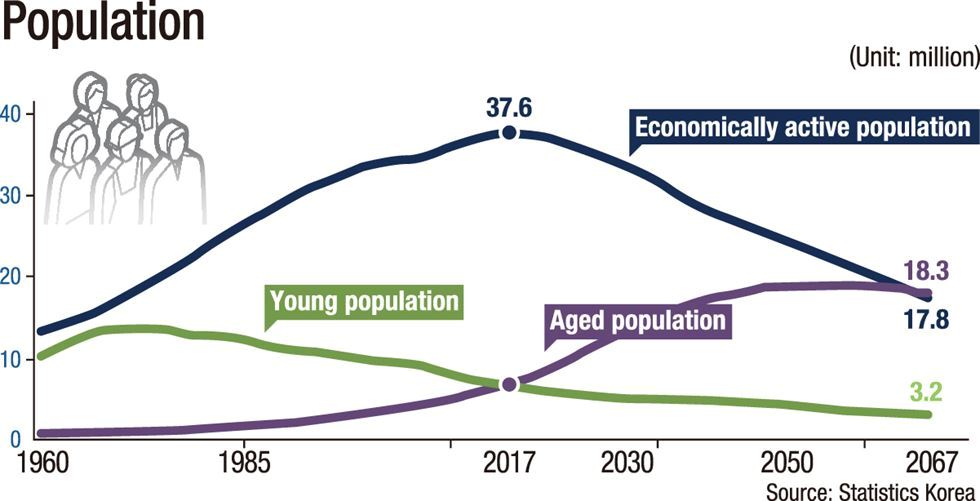[Analytics] S. Korea economy faces demographic shock amid low birthrate

The country’s economy will soon start reeling from a demographic shock as the population will start to decline faster this year, according to a report by Statistics Korea, Thursday. This is because of two factors ― the declining birthrate and superfast aging. Park Hyong-ki specially for The Korea Times.
The number of elderly people passing away is expected to exceed that of newborns beginning this year, the statistics agency noted.
This will push down the population from 51.4 million in 2017 to 39.3 million in 2067.
Analysts say this downward trend will obviously weigh on productivity and gross domestic product (GDP) growth.
They added the government needs to review and overhaul its policies on housing, childbirth, welfare, labor, education, the environment and immigration as the World Health Organization (WHO) and the OECD have constantly suggested since the country started to see its birthrate drop.
“The population forecast is based on the most recent policy trend. We need to set up suitable and correct policies for childbirth and immigration at the same time, not separately,” said Sung Tae-yoon, an economist at Yonsei University.
Statistics Korea issues the population trend report every five years. The previous report was compiled in 2016, but the latest one has been produced two years early due to the rapid decline in the birthrate over the past two years.
The 2016 report said the number of natural deaths will exceed that of newborn babies in 2029.
As the total fertility rate, measuring how many babies a woman chooses to have, has kept falling ― from 1.05 in 2017 to 0.98 in 2018 ― the statistics agency needed to recalibrate its population forecast.
Should this trend continue, the 2019 report said the rate will drop from 0.94 in 2019 to 0.86 in 2021, and the population will fall to 39.3 million in 2067.
The WHO suggests a rate of two children per woman to maintain population stability. If it falls below two, it recommends governments revise their social and economic policies to fill the void left by the falling population and productivity.
“The falling population has been expected for quite a while. What is new in this report is that the rate is dropping much faster than we had all expected. Labor policies should be adjusted based on the forecast and help society prepare for the inevitable,” said Kim Jung-ho, an economist at Ajou University.
In 2014 when the rate stood at 1.19, the National Assembly Research Service projected that the country would see population annihilation by the year 2750. But the “zero-rate era” has pushed this forward by a century to 2650.